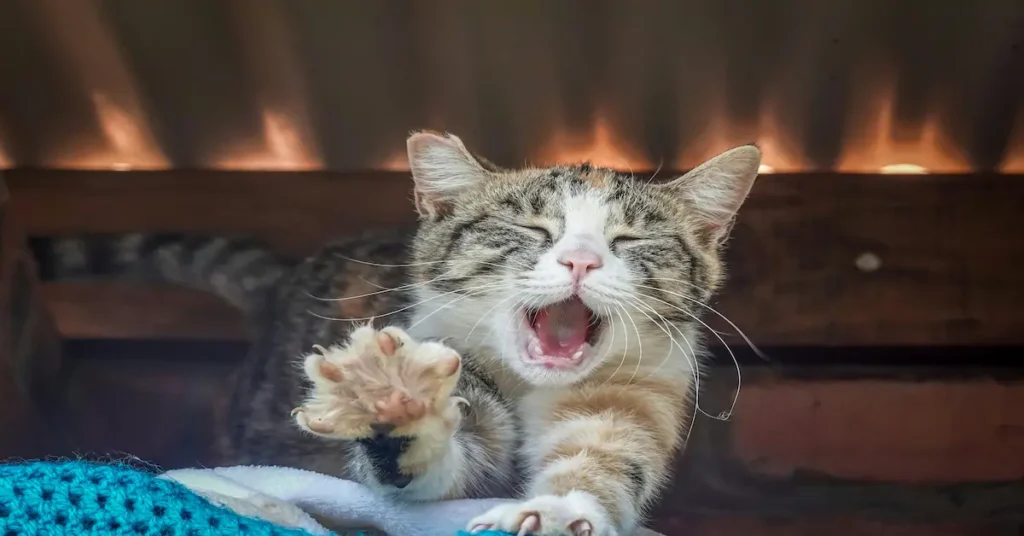Our pets may not speak our language, but they’re always talking. Whether it’s a wagging tail, flattened ears, or an arched back, every movement your pet makes is a form of communication. As a responsible pet owner, understanding these non-verbal signals is critical not only for your pet’s well-being but also for deepening the bond you share.
Pets rely heavily on body language to express emotions like happiness, fear, anxiety, and even affection. Unlike humans, they can’t say, “I’m scared,” or “I’m in pain,” so they communicate through posture, tail movements, ear positions, and facial expressions. This article will guide you through the most common body language signs across dogs, cats, birds, and small mammals so you can better understand what your pet is really saying.
Why Pet Body Language Matters

Understanding your pet’s body language goes beyond curiosity it’s a cornerstone of compassionate and responsible pet ownership. When you can accurately read your pet’s cues, you can:
- Prevent aggressive incidents
- Provide comfort when they are stressed
- Recognize early signs of illness
- Build trust and reduce anxiety
- Enhance your overall relationship with your pet
Misreading or ignoring body language can lead to behavioral problems, stress for your pet, and even dangerous situations. Knowledge is not just power it’s also peace for both you and your animal companion.
Canine Communication: Reading Dog Body Language

Dogs are among the most expressive domestic animals. From subtle shifts in posture to tail wagging and eye movement, your dog is constantly giving you information.
1. Happy and Relaxed Dog
- Tail: Gently wagging at mid-height
- Ears: Natural position, relaxed
- Eyes: Soft, blinking or slightly squinting
- Body: Loose, bouncy movements, may offer belly or play bow
This is the classic “content” dog posture. If your dog shows these signs, it’s an invitation to play, cuddle, or enjoy a walk.
2. Stressed or Anxious Dog
- Tail: Tucked under the body
- Ears: Pulled back or flattened
- Mouth: Yawning, panting, or licking lips with no food present
- Body: Hunched, pacing, avoiding eye contact
These signs can often be seen in new environments, loud situations, or around unfamiliar animals. Give your dog space and try to create a calm atmosphere.
3. Aggressive or Threatened Dog
- Tail: Stiff and upright or rapidly wagging
- Ears: Perked forward
- Eyes: Staring intensely
- Body: Rigid posture, possible growling or baring of teeth
If you notice this posture, intervene calmly but quickly. Never punish a dog for growling it’s a warning, not bad behavior. Punishing warning signs can remove them, leaving biting as the first response.
Read more about dog behavior at ASPCA – Dog Behavior
Feline Language: What Your Cat Is Saying
Cats often get labeled as mysterious or aloof, but they’re actually very expressive you just need to know what to look for.
1. Content and Relaxed Cat
- Tail: Upright with a gentle curve
- Ears: Forward or slightly relaxed
- Eyes: Slow blinks or partially closed
- Body: Lounging posture, possibly exposing the belly
This means your cat feels safe and comfortable. Slow blinking back at your cat can even reinforce trust.
2. Stressed or Fearful Cat
- Tail: Tucked around body or thumping
- Ears: Flattened or swiveling back
- Eyes: Wide-open with dilated pupils
- Body: Low to the ground or hiding, trembling
Stressed cats need a safe, quiet space. Do not force interaction let them come to you when ready.
3. Aggressive or Defensive Cat
- Tail: Bristled or whipping side to side
- Ears: Fully flattened
- Eyes: Direct, unblinking stare
- Body: Arched back, fur standing up, vocalizations like hissing or growling
Avoid touching a cat in this state. Provide an escape route and allow them to de-escalate.
Learn more from International Cat Care
Beyond Dogs and Cats: Reading Small Pets and Birds
While dogs and cats are common companions, small pets like rabbits, guinea pigs, and birds also use body language.
Rabbits
- Flopping onto side: Extremely relaxed
- Thumping: Alarm or warning
- Grinding teeth loudly: Pain
- Perked ears and still body: Alert or scared
Guinea Pigs
- Popcorning (jumping): Excitement
- Freezing: Fear
- Teeth chattering: Annoyance or warning
Birds
- Fluffed feathers: Content (briefly), or sick if constant
- Tail bobbing: Breathing difficulty
- Head bobbing: Excitement in parrots
- Wings slightly outstretched: Ready to fly or over-stimulated
Each species has a unique “vocabulary,” but many signals overlap in meaning especially those involving posture and movement.
Common Misunderstandings in Pet Body Language
Even experienced pet owners sometimes misread signals. Here are a few common myths:
- A wagging tail always means happiness: False. Tail wagging can also indicate tension or over-stimulation, especially when stiff.
- A cat showing its belly wants a belly rub: Not always. It may be a sign of trust, not an invitation.
- Panting in dogs is just heat-related: It can also signal anxiety or pain.
- Purring means your cat is happy: Cats may purr when in pain or stressed, especially at the vet.
Understanding the context and observing the whole body (not just one signal) is key to correct interpretation.
How to Respond to Pet Body Language
When you learn to identify your pet’s signals, your response should be:
- Respectful: Don’t force interactions when your pet is scared or stressed.
- Supportive: Create a calm, safe space to help them feel secure.
- Interactive: Use positive reinforcement like treats or praise when they display confident and relaxed behavior.
- Observant: Look for patterns if your pet consistently shows signs of fear in specific scenarios, those moments may need behavior work or environmental change.
When to Get Professional Help
If your pet is consistently displaying warning signs like:
- Aggression toward people or animals
- Excessive hiding or withdrawal
- Destructive behavior
- Excessive vocalizations
- Changes in appetite or litter habits
…it’s time to consult a veterinarian or certified animal behaviorist. Behavior is often linked to medical issues, so getting a check-up is the first step.
Conclusion
Understanding pet body language is more than decoding a wagging tail or a twitching ear it’s about listening to the way your pet naturally communicates. Every twitch, purr, growl, or stretch has meaning. By paying close attention and learning what your pet is truly saying, you can build deeper trust, prevent misunderstandings, and provide better care.
Whether you share your home with a dog, cat, rabbit, or bird, this knowledge empowers you to become a more thoughtful, responsive, and connected pet parent.
Frequently Asked Questions (FAQs)
Q1: How can I tell if my dog is just excited or actually anxious?
Look at the full body: Excited dogs have loose, wiggly bodies and open mouths; anxious dogs may pant, avoid eye contact, or pace.
Q2: Is a cat’s tail movement a reliable emotion indicator?
Yes. A softly swaying tail means curiosity; fast twitching or puffing often signals irritation or fear.
Q3: Why is my bird puffed up all day?
It may be cold or unwell. Constant fluffing without activity could indicate illness—consult a vet.
Q4: What if I can’t understand my pet’s signals?
Keep a log of behaviors and consult online resources or professionals for guidance.
Q5: Do pets learn to understand human body language too?
Absolutely. Many pets respond to our posture, tone, and movements—communication goes both ways.